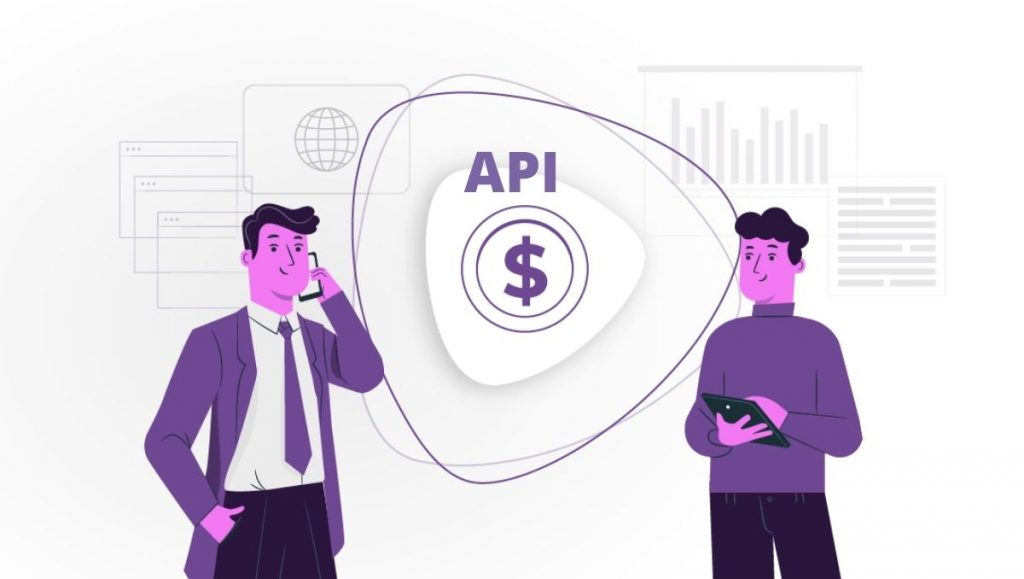Table of Contents
Our daily routines are packed with the use of different applications, each handling its own types of data and using different communication methods. Often, there’s a need for these applications to work together, but some barriers may complicate the process. This is where APIs step in.
Integrating APIs into the development process allows us to efficiently add or even improve website or web application features by using external resources and libraries. Instead of starting from scratch, we now incorporate existing software directly.
Over the past few decades, the API landscape has expanded significantly, with more than 15,000 public APIs available for developers. Using these APIs offers several advantages for client projects, including:
- Speed: With APIs, developers can launch products more quickly than if they had to build everything from the ground up.
- Reliability: Using established libraries and software reduces risk, as they have been tested and refined by numerous organisations.
- Cost-efficiency: Integrating an existing tool often appears to be more economical than developing one yourself.
As a result, we turn to APIs when they best meet the goals and needs of a software development project.
What is the application programming interface?
API is abbreviated from “application programming interface.” Simply put, an API is a set of standardized protocols that allows two systems to communicate.
Multiple APIs work in the background even when you use your favourite app on your computer, phone, or log directly into social media platforms like X or Facebook. Almost every business that relies on modern technology uses APIs in some way—to extract data or interact with a customer database.
The structured communication that APIs provide allows developers to quickly build, connect, and scale software applications.
In 2002, Jeff Bezos made a bold move at Amazon that would change the company’s trajectory. He understood that to stay ahead, Amazon needed to use technology in a smarter way. So, he requested all teams to share their data and capabilities via service interfaces, laying the groundwork for what we now call APIs.
This shift had a profound impact on Amazon’s operations. Teams became more efficient and worked better together, breaking down the silos that had slowed processes. Over time, this interconnected system evolved into the infrastructure for Amazon Web Services (AWS), becoming the company’s biggest source of revenue.
However, many businesses don’t rely on internal APIs for their engineers to build features. They also offer external APIs for the broader developer community to create new products. For example, SendGrid (email API) and Paypal (payments API) operate under a model called “Platform as a Service” (PaaS). These platforms allow engineers to develop apps that handle tasks like hosting web servers or managing communication tools.
Some businesses derive their core value from connecting various web services and APIs, known as “Integration Platform as a Service” (IPaaS). These companies enable users to link various web services to automate tasks, workflows or route data. Either PaaS or IPaaS sectors have seen significant growth thanks to the flexibility and user-friendliness that APIs provide.
What the statistics say?
A recent study by Gartner reveals that 65% of organisations have already integrated APIs into their software systems, with an additional 25% planning to adopt them within the following year.
Another report by Deloitte shows that companies investing in application programming interface integration face a 20% boost in productivity and a 15% decrease in operational costs, highlighting the huge effect that API integrations can have on business performance.

Overall, API integrations are an effective strategy for businesses to streamline operations. By incorporating APIs into their software systems, companies can significantly boost productivity, improve user experience, and automate a myriad of routine tasks.
But how exactly do APIs function? How can we use them to connect the services we depend on for routing data or automating important processes?
How do APIs work?
API outlines how computers, machines, or applications communicate. Simply put, an ordinary user interface is designed for human interaction, whereas APIs are meant for applications or computers to interact smoothly.

As a rule, web APIs serve as intermediaries between an application and a web server. When a user makes an API call, it directs the application to execute a specific action. The application then uses the API to communicate with the web server; the API call represents the request being made. As a result, whenever you use software to interact with other applications or online servers, you’re using APIs to access the information you need.
Let’s admit that web APIs are the most common, but they aren’t limited to web applications. APIs can be found in various environments, including mobile apps, desktop applications, and hardware systems. This versatility allows different platforms to communicate and share data effectively, enabling smooth integration across diverse systems.
To illustrate how an API works, imagine you’re at a restaurant. The waiter (the API) is a mediator between you, the user and the kitchen, the web server. You place your order with the waiter (the API call), who then relays it to the kitchen. Ultimately, the waiter returns to you with your order.

What are the types of API integrations?
While discussions about APIs often focus on web technologies, it’s important to note that APIs extend beyond web services. Here’s an overview of some common (and less common) APIs.
SOAP APIs
SOAP, or “Simple Object Access Protocol,” requires more upfront information regarding security and message transmission. The extra standards introduce more overhead, often making SOAP less lightweight and flexible. Although SOAP has been an application programming interface standard since the late 1990s, its complexity often limits the portability and ease of use.
Browser APIs
Browsers can create diverse user experiences, from displaying animations and playing music to responding to the mouse. To enable web developers to control these experiences, browsers provide browser APIs that allow developers to use JavaScript to create unique interactions within a browser instance.
iOS/Android APIs
Each and every mobile platform offers its own set of APIs that equip developers with the tools needed to create user experiences. Software engineers can use these APIs to interact with the device’s hardware, access sensors like the camera, and perform various other functions.
REST APIs
REST, which stands for “Representational State Transfer,” is a software design approach that provides access to data—also known as “web resources”—through a uniform and predefined set of operations. The payload, or the data being delivered, is defined within the request and can be formatted in languages like HTML, JSON, or XML.
The operations available to REST APIs correspond to methods defined by HTTP, the underlying protocol that browsers use to retrieve websites from servers.
What are the benefits of API integrations?
Now that we have a clearer understanding of how API integration works in practice, it’s useful to consider its broader business benefits.

Development costs
One key advantage of API integrations is their effect on development expenses. Given the right tools, we can often avoid the need to build certain functionalities from the ground up by using APIs. This approach streamlines the initial development and reduces ongoing maintenance and support costs since much of the functionality is handled by existing platforms. As a result, we have lower development costs for new projects and the management of current systems.
Efficiency and productivity
It goes without saying that API integration improves teams’ day-to-day operations. Reducing administrative tasks often leads to increased productivity. A large part of this improvement comes from APIs’ automation capabilities, particularly in data management. For example, repetitive tasks like data entry can often be automated or even eliminated, allowing team members to focus on more engaging and complex work.
Expanded functionality
With API integrations, we’re better positioned to enhance the functionality of our software. It offers a simple way to incorporate existing resources instead of starting from scratch, which can save time and reduce the technical skills needed to develop new features. Eventually, your team has the right tools to create new solutions without high barriers or costs.
Agility and scalability
Lastly, API integrations provide a distinct advantage in expanding and scaling our tools in response to changes. This ties back to the earlier benefits we discussed. When integrating new features gets more cost-effective, it naturally becomes easier to grow and adapt our solutions—whether that means adding new functionality or improving existing ones.
What are the key concerns during API integration?
Security and authentication
When integrating APIs, use secure authentication methods, such as OAuth, to safeguard sensitive data and prevent unauthorised access. Additionally, implement encryption and access controls to enhance the security of API interactions.
API documentation and usability
Proper API documentation is a must for successful API integration. This documentation should clearly outline API endpoints, request and response formats, authentication methods, and error-handling procedures. Well-structured and user-friendly API documentation helps developers easily understand how to interact with the API and troubleshoot any issues that may arise.
Performance and reliability
The performance of APIs directly affects the overall functionality of your custom software application. Ensure that APIs are designed to handle high volumes of requests while providing consistent response times. Consider implementing caching mechanisms and load balancing to enhance API performance and reliability.
Versioning and compatibility
Implement version control to ensure that changes do not disrupt existing integrations. Communicate updates and deprecations clearly to help developers smoothly adapt to any changes.
Testing and monitoring
Thorough testing ensures APIs function as intended and can effectively handle edge cases. Automated testing tools can identify issues and confirm that APIs meet performance and reliability standards. Additionally, monitor API usage and performance to detect and resolve any emerging problems in a timely manner.
What are the common API integration use cases?
We know APIs are widely used to connect software systems and enhance functionality. But what are some of the ways they’re applied? Let’s explore a few common API integration use cases that facilitate operations across different industries.

Cloud service integrations
APIs enable smooth connectivity between various cloud platforms, allowing businesses to automate workflows, manage data, and enhance collaboration across AWS, Azure, and Google Cloud services.
Delivery management
APIs facilitate real-time communication between delivery systems and logistics providers, tracking shipments, optimising routes, and improving delivery efficiency.
eCommerce integrations
eCommerce platforms use APIs to connect with payment gateways, inventory systems, and customer relationship management (CRM) tools, streamlining sales processes and operations.
Enterprise data integrations
Freight management
Freight management APIs allow companies to automate booking, tracking, and billing processes, significantly improving the overall efficiency of logistics operations.
Payment integrations
Payment APIs enable the secure processing of transactions, supporting various payment methods and currencies and integrating seamlessly with e-commerce platforms for a smooth checkout experience.
Warehouse management
Warehouse management APIs streamline inventory control, order fulfilment, and logistics operations, enhancing efficiency and reducing errors in supply chain management.
Why do you need API integration?
API integration enables different systems to share data and work together without requiring manual intervention. It simplifies complex tasks like syncing information between platforms, automating workflows, or adding features without rebuilding software from scratch. Let’s explore the key reasons why API integration can benefit your business.
Poor integrations impact revenue
We all understand that time is a valuable resource. When companies rely heavily on manual data entry, they tend to risk falling behind financially. A recent survey found that 74% of companies lose in revenue up to $500K per one year due to inconsistent API integrations, with 10% of companies losing more than $1M.

Embracing digitalisation through API integration allows all aspects of your operations to move faster, meaning revenue flows more efficiently. By streamlining integrations, businesses can minimise downtime and maximise their financial potential.
Integrating legacy applications
More than half of businesses find it challenging to integrate legacy applications, and this issue is becoming even more pronounced as cloud-based solutions become increasingly common. Many organisations have heavily invested in their legacy systems and are hesitant to leave them behind, yet they also understand the growing need for cloud access.
Integrating new applications
Having a modern integration platform at your disposal, your business can easily use any communication protocol whenever needed—without incurring additional costs. These platforms use already pre-configured connectors, enabling you to implement efficient application integrations. For example, through API integration, you can share the information from a database across your internal systems, enhancing the value of that data across numerous teams. On the external front, your company can expose its APIs to your stakeholders and partners, allowing for the real-time sharing of selected data.
Poor application visibility
Improved visibility into your data across your entire system significantly lowers risk exposure. New integration tools offer visibility through customisable dashboards, enabling real-time reporting that alerts stakeholders to any data challenges affecting their key business relationships.
Overall, API integration is inevitable for manufacturers, logistics companies, retailers, and others. It enables you to retain your existing applications while seamlessly integrating different systems across your B2B ecosystem. As a result, you accelerate your business processes, facilitate application integration, and enhance visibility across external and internal operations, ultimately driving increased revenue, stronger relationships, and improved performance.
The final words
In some way or another, APIs have changed modern software development. The emergence of the API economy allows software development companies to quickly implement key functionalities that previously required months or years of coding. This shift has empowered end users to connect their best-of-breed applications and transfer data among them through API calls.
Today, companies use their cloud apps’ APIs to automatically deploy mission-critical data across their tech stack, even for custom fields that may not align with standard integrations.
For example, Altamira team recently delivered a revolutionary empowerment tool for neuropsychological assessments and a child’s academic success for Elula. Our solution is compatible with Google Classrooms, as well as integrated with other major LMS platforms such as Schoology, Blackbaud, Black Board, Infinite Campus, and Canvas. Read more

How can Altamira help you?
You don’t have to worry about building and maintaining your integrations. At Altamira, we provide tailored API integration solutions that meet the unique needs of your business. Our experienced team works closely with you to identify the right APIs and ensure smooth communication between your applications and external systems. We prioritise security, implementing robust authentication methods to protect your sensitive data while facilitating efficient workflows. Our team offers:
- Strong expertise in API integration: Benefit from our extensive knowledge and experience in integrating various APIs, ensuring smooth communication between your applications and systems.
- Customised solutions: We tailor our API integration process to fit your business’s unique needs, helping you achieve your goals efficiently.
- Enhanced security: We prioritise your data security by implementing reliable authentication methods and best practices to protect sensitive information during API interactions.
- Improved efficiency: Streamline your operations with our API solutions, allowing for faster data exchange and better collaboration across different platforms.
- Scalable integration: As your business grows, our API integration services can easily adapt to accommodate new requirements and technologies, ensuring long-term support.
- Ongoing support: Our team provides continuous monitoring and support for your API integrations, helping you troubleshoot issues and optimise performance as needed.
- Agility: By partnering with Altamira, you gain access to innovative API solutions that enhance your agility, allowing you to respond quickly to market changes and customer demands.




